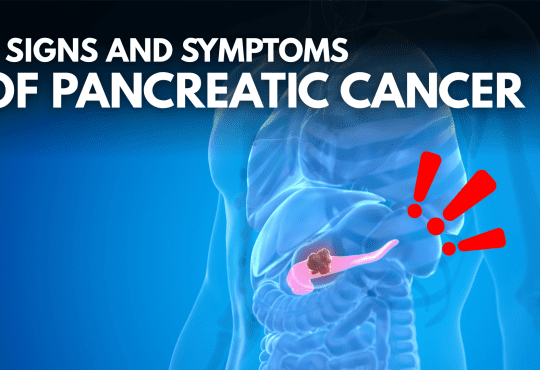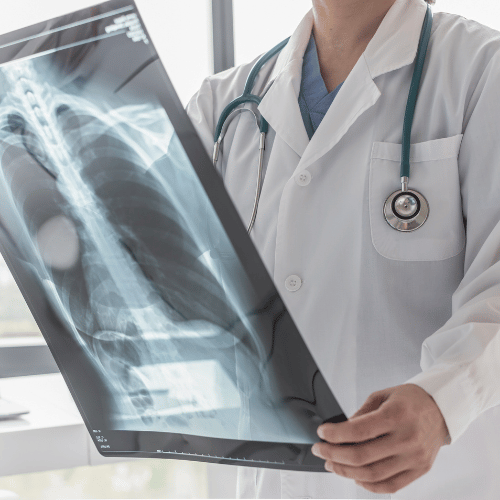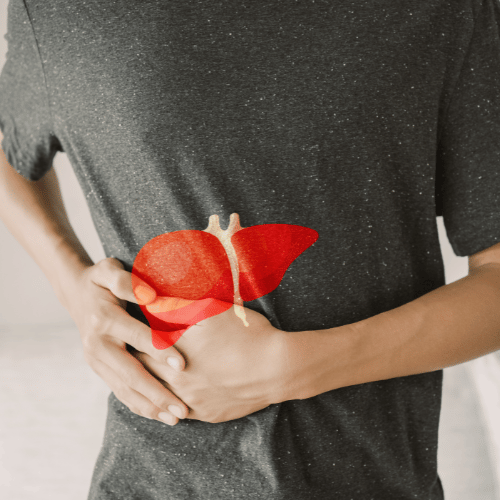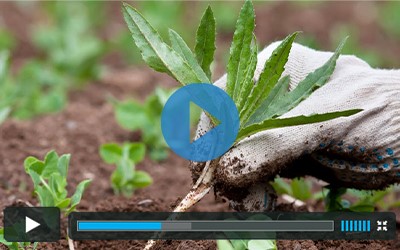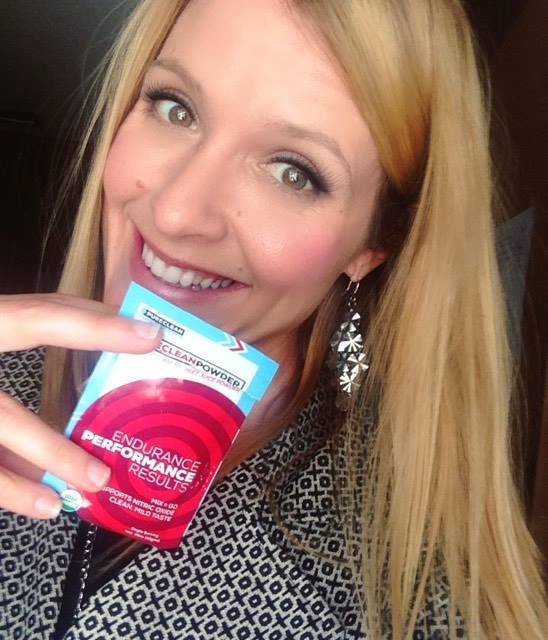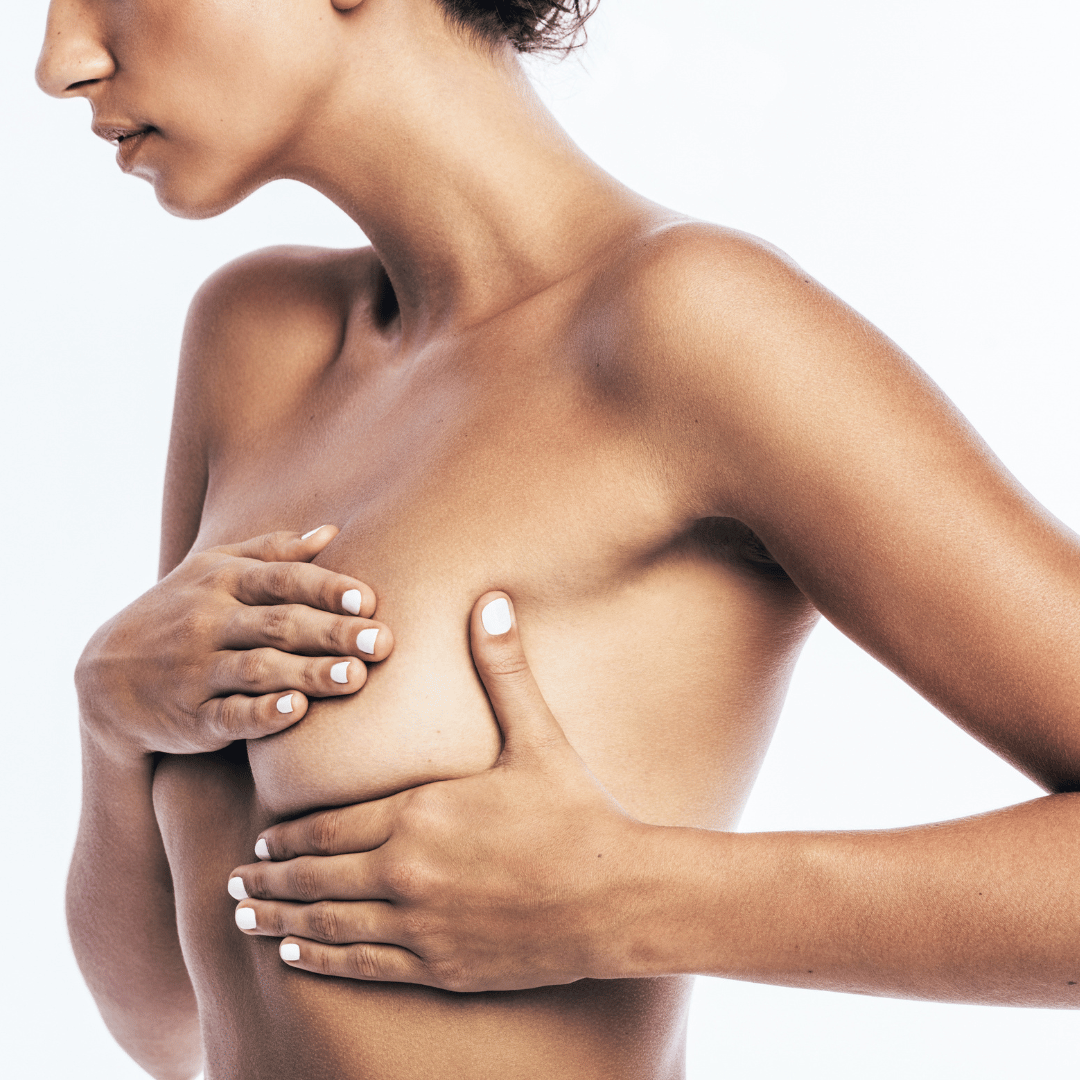
8 Signs and Symptoms of Breast Cancer To Watch Out For
Breast cancer is a prevalent disease affecting people globally and across genders.
It’s not exclusive to women; men can also be diagnosed with breast cancer, albeit at lower rates.
The key to successful breast cancer treatment and improved outcomes lies in early detection.
By familiarizing yourself with the warning signs, you can be proactive in seeking medical attention, ultimately enhancing your chances of identifying the disease in its initial stages.
Breast cancer often starts as a change or abnormality in the breast tissue.
These changes may cause various symptoms that should never be overlooked.
While these symptoms can be associated with other conditions, it’s crucial to consult with a healthcare professional for a proper evaluation and diagnosis.
Today, we will unpack the major signs and symptoms of breast cancer you should remain vigilant about.
Number 8. Change in Breast Size or Shape
Breast asymmetry is a common trait in women, but a sudden and distinct change in the size or shape of one breast could signal a potential problem.
One study, published in the Journal of Women’s Health in 2017, highlighted that significant asymmetry in breast size could be an independent predictor of breast cancer. (1)
If you notice a significant shift in the size or shape of your breast — such as an unexplained swelling or shrinkage, particularly if it’s only on one side — it should be evaluated by a healthcare professional.
Also, watch out for changes in the contour or silhouette of your breast, such as an indentation or flattening.
Remember that these changes can occur without the presence of a lump.
A 2016 study in the journal Cancer Epidemiology indicated that 1 in 6 women who received a breast cancer diagnosis reported one of these less commonly known symptoms first. (2)
In essence, it’s not just about looking for lumps; any noticeable change in your breast’s size or shape warrants attention.
Early detection significantly improves the prognosis of breast cancer, so it’s essential to be familiar with the normal look and feel of your breasts.
This can be achieved through regular self-examinations, and it’s equally important to attend regular clinical exams and mammograms as recommended by your healthcare provider.
If something feels or looks different, don’t ignore it — and seek medical attention.
Number 7. Lumps or Thickening in the Breast or Underarm
The formation of a lump or a thickened area in the breast or underarm is one of the most common and earliest signs of breast cancer.
According to the American Cancer Society, approximately 80% of women diagnosed with breast cancer discover the disease through self-detection of a lump. (3)
This lump is often painless, firm, and has irregular edges, but it can also be tender, soft, rounded, and quite painful.
The key is that it feels different from the rest of the breast tissue, almost as though something has been planted there that doesn’t quite belong.
Similarly, lumps or swelling in the lymph nodes under the armpit can also be a sign of breast cancer.
This is due to the fact that breast cancer can spread to these nodes even before the primary tumor can be detected by a mammogram.
A 2012 study published in the Journal of Oncology showed that patients who had positive axillary (underarm) lymph nodes were 2.3 times more likely to experience breast cancer recurrence and 2.6 times more likely to die from the disease. (4)
Therefore, detecting these lumps early and getting them evaluated can significantly impact treatment outcomes and overall survival rates.
However, it’s crucial to remember that not all lumps are cancerous.
They can also be benign growths or cysts.
But distinguishing between the two often requires medical tests…
Hence, it’s advisable to consult with a healthcare professional if you discover any new lump or thickened tissue, regardless of size or location.
Number 6. Breast or Nipple Pain
Unexplained and persistent pain in the breast or nipple, especially when it’s concentrated in one specific area, could indeed be a warning sign of breast cancer.
This symptom might seem somewhat common, as women can experience breast pain for various reasons, such as hormonal fluctuations associated with the menstrual cycle.
However, the type of pain linked to breast cancer usually differs from typical hormonal pain.
Breast pain linked to breast cancer is often not cyclical (does not come and go with your menstrual cycle), and it is usually localized in one area.
It can be constant or it can come and go, and it can range from being mild to very severe.
In a 2013 study published in the Journal of Pain and Symptom Management, out of 398 participants diagnosed with various stages of breast cancer, nearly half reported experiencing moderate to severe breast pain.
The study also found that the presence and severity of pain could potentially be linked with more advanced stages of the disease. (5)
Furthermore, breast pain can sometimes be associated with inflammatory breast cancer, a rare but aggressive type of the disease.
Inflammatory breast cancer can lead to changes like skin reddening, swelling, and an increase in breast size, alongside persistent pain.
However, it’s important to remember that most breast pain isn’t due to cancer.
In fact, according to BreastCancer.org, only about 5% of women with breast pain are diagnosed with breast cancer. (6)
But if the pain is persistent, seems different from any other pain you’ve experienced before, or is concentrated in one specific area, it’s essential to get it checked by a healthcare professional.
Moving on to our countdown is…
Number 5. Nipple Discharge Other Than Breast Milk
An unexpected nipple discharge, particularly if it’s bloody, clear, or of an unusual color, and when not breastfeeding, could indicate breast cancer.
This type of discharge can be a symptom of several conditions, including an infection or a benign tumor, but in some cases, it can be associated with a specific type of breast cancer known as ductal carcinoma in situ (DCIS).
DCIS is a non-invasive form of breast cancer where the cancer cells are confined to the ducts in the breast.
According to the American Cancer Society, nipple discharge, often bloody, is a common symptom of DCIS, reported in up to 10% of cases. (7)
Interestingly, a study published in the International Journal of Medical Sciences found a link between nipple discharge color and breast cancer.
Out of 83 patients with pathologically confirmed breast cancer and nipple discharge, 70.4% had bloody discharge, while the rest had serous (clear) discharge.
The study concluded that bloody nipple discharge could be a significant symptom in diagnosing breast cancer. (8)
However, it’s important to note that most nipple discharges are not linked to cancer.
It is common in women, and can occur as a result of hormonal changes, an infection, or other non-cancerous conditions.
Regardless, any new, unexplained, or unusual nipple discharge should be evaluated by a healthcare professional.
At Number 4. Changes to the Skin over the Breast
Changes to the skin on your breast, such as puckering, dimpling, scaling, or taking on an “orange peel” texture, could indeed be indicative of breast cancer.
This symptom is often associated with a type of breast cancer known as inflammatory breast cancer (IBC), but it can occur with other types as well.
Inflammatory breast cancer is a rare but aggressive form of the disease that often presents with a rapid onset of skin changes.
According to the American Cancer Society, symptoms may include redness, swelling, and warmth in the breast, often without a distinct lump.
The skin may appear pitted or thick, similar to an orange peel, a condition known as peau d’orange. (9)
Dimpling or puckering of the skin, also known as skin retraction, could be a sign of a tumor lying beneath the surface.
The American Cancer Society highlights that the tumor can pull on the connective tissue within the breast, leading to these changes in the skin’s appearance. (10)
A study published in the British Journal of General Practice found that out of 279 patients diagnosed with breast cancer, 19% had skin dimpling as a symptom. (11)
Even scaling or dry, flaky skin around the nipple can be a sign of a rare type of breast cancer known as Paget’s disease of the breast.
The National Cancer Institute states that Paget’s disease symptoms may include redness, flaking, and crusting of the nipple skin. (12)
Thus, any noticeable changes to the skin of your breast, be it dimpling, puckering, scaling, or an “orange peel” texture, should be promptly evaluated by a healthcare professional.
While these symptoms can be caused by benign conditions like mastitis or eczema, they could also signify breast cancer.
Number 3. Inverted Nipple.
A sudden inversion of the nipple – that is, when it turns inward rather than outward – can be a sign of breast cancer.
Nipple inversion can happen in response to changes happening inside the breast tissue, which can be benign but also potentially malignant.
A study published in the Annals of Surgical Oncology found that out of nearly 3000 women with breast cancer, around 9% had nipple inversion as a presenting symptom. (13)
Breast cancer may cause nipple inversion by causing changes in the breast tissue behind the nipple.
As a tumor grows, it may pull on the tissue, causing the nipple to retract or invert into the breast.
According to the American Cancer Society, changes to the nipple, such as inversion, are often associated with more advanced forms of cancer that have started to affect the skin and other structures within the breast. (14)
However, it’s crucial to remember that not all nipple inversions signify breast cancer.
Some people naturally have inverted nipples, and others may experience inversion due to aging, trauma, or infections.
Regardless, any new or unexplained change to the nipple should be evaluated by a healthcare professional.
Even if it isn’t cancer, it could indicate another underlying health issue that requires attention.
Always remember that early detection of breast cancer greatly increases the chances of successful treatment and survival.
Number 2. Redness, Swelling, or Rash
Inflammatory breast cancer (IBC) is a rare and very aggressive form of breast cancer that progresses rapidly, often in weeks or months.
IBC accounts for only 1-5% of all breast cancer cases, but it’s particularly dangerous because it often goes unrecognized and undiagnosed until it’s in the late stages.
Unlike most breast cancers, which present as a lump, IBC often starts with the redness and swelling of the breast, making it easily mistaken for an infection or an allergic reaction.
Its symptoms are not typical and can include the entire breast becoming red, swollen, warm, and tender to the touch.
The skin may also appear pitted, much like the skin of an orange, a condition known as ‘peau d’orange.’
A study published in The Breast Journal highlighted the importance of recognizing these symptoms, particularly when they’re limited to one breast and don’t appear to be associated with a skin condition or allergic reaction.
The study underscored that these might be symptoms of inflammatory breast cancer. (15)
This form of cancer is unique because it doesn’t always cause a hard lump that can be detected through a self-exam or mammogram.
Instead, it grows in sheets or nests, spreading rapidly through the breast’s lymphatic vessels.
Therefore, any persistent changes to the skin on your breast should be immediately evaluated by a healthcare professional.
If diagnosed and treated early, the survival rate for IBC improves significantly.
Remember, knowledge is power when it comes to your health.
By understanding and recognizing these signs and symptoms of breast cancer, you can take charge of your health and ensure that if breast cancer does occur, it is caught early when it’s most treatable.
Last but not least is…
Number 1. Change in the Appearance of the Nipple or Areola
Changes in the appearance of the nipple or areola, including scaling, crusting, or changes in color, can be an indication of breast cancer.
Specifically, these changes may signal a type of breast cancer known as Paget’s disease.
Paget’s disease of the breast is rare, accounting for less than 5% of all breast cancer cases according to the National Cancer Institute.
Despite its rarity, it’s important to recognize these symptoms, as early detection can significantly improve the prognosis.
This disease is often associated with underlying ductal breast cancer or even invasive breast cancer.
The most common initial symptom, as stated in a research published in the Journal of Clinical Pathology, is usually eczema-like changes in the nipple skin (areola).
This may include redness, mild flaking, or scaling.
Over time, these changes can progress to include oozing, crusting, or changes in color.
Also, the nipple can become inverted or flattened.
It’s important to note that these changes usually affect only one nipple and may be accompanied by a lump in the breast.
If you notice any changes in the nipple or areola, even if they seem minor or superficial, it’s important to bring them to your doctor’s attention right away.
Remember, it’s better to be safe than sorry when it comes to changes in your body, especially when it concerns potential signs of cancer.
And there you have it! Those are some of the key signs and symptoms of breast cancer that you should be aware of.
It’s critical to remember that early detection can make all the difference when it comes to effectively treating breast cancer, which is why it’s so crucial to monitor your body for any changes and consult your healthcare provider immediately if you notice any of these symptoms.
I cannot stress this enough: these signs and symptoms can also be related to other conditions, but it’s always best to consult with a healthcare professional for a proper evaluation and diagnosis.
Breast cancer is a complex disease with many different types and stages, each with its own set of symptoms and treatment options.
It’s vital to know your body, be aware of the changes, and act promptly. Remember, your health is your wealth!
Every little bit helps and your support is greatly appreciated!
Finally, we’d love to hear your thoughts or any questions you might have, so please leave us a comment below.
Remember, your health matters. Stay informed, stay safe, and take care of yourselves.
SOURCE:
(1) “Breast size and breast cancer: a systematic review”, Journal of Women’s Health, 2017.
(2) “Symptom recognition and perceived urgency of help-seeking for breast cancer among recent female immigrants in Ontario, Canada”, Cancer Epidemiology, 2016.
(3) “Breast Cancer Facts & Figures 2021-2022”, American Cancer Society, 2021.
(4) “The Impact of Positive Lymph Node Ratio on Survival in Early-Stage Breast Cancer”, Journal of Oncology, 2012.
(5) “Pain is a Common and Burdensome Symptom of Early Stage Breast Cancer”, Journal of Pain and Symptom Management, 2013.
(6) “Breast Pain”, BreastCancer.org, reviewed January 2020.
(7) “Signs and Symptoms of Ductal Carcinoma In Situ (DCIS)”, American Cancer Society, updated 2021.
(8) “Clinicopathological Features of Breast Cancer with Nipple Discharge”, International Journal of Medical Sciences, 2020.
(9) “Inflammatory Breast Cancer”, American Cancer Society, updated 2021.
(10) “Signs and Symptoms of Breast Cancer”, American Cancer Society, updated 2021.
(11) “Presentation of Breast Cancer in General Practice and its Effect on Survival”, British Journal of General Practice, 2015.
(12) “Paget’s Disease of the Breast”, National Cancer Institute, updated 2019.
(13) “Nipple inversion: Is it a ‘sign’ of malignancy?”, Annals of Surgical Oncology, 2011.
(14) “Signs and Symptoms of Breast Cancer”, American Cancer Society, updated 2021.
(15) “Inflammatory breast cancer: the disease, the biology, the treatment.” The Breast Journal, 2010.
(16) “Paget’s disease of the nipple: a 12 year review highlighting the role of dermoscopy.” Journal of Clinical Pathology, 2018.
(17) “Breast Cancer: Early Detection, Risk Factors and Diagnosis.” American Cancer Society, 2022.
(18) “What Are the Symptoms of Breast Cancer?” Mayo Clinic, 2022.
(19) “Breast Cancer Symptoms: What You Need to Know.” Centers for Disease Control and Prevention, 2022.

